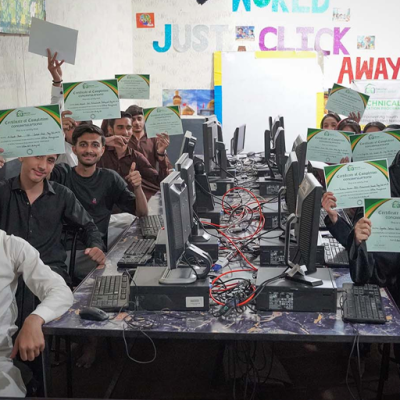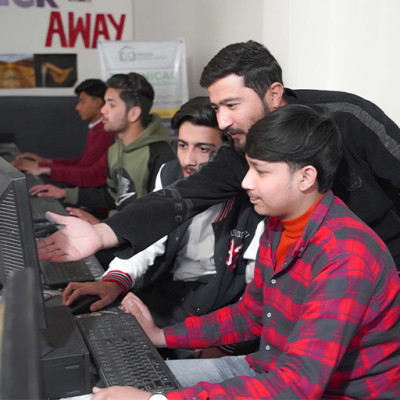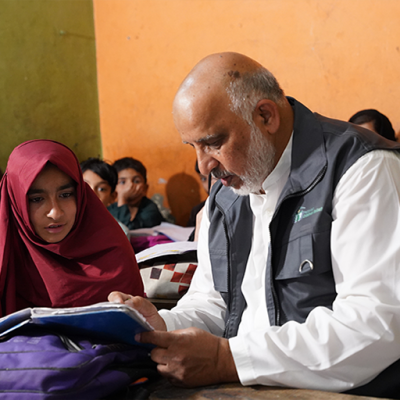Pakistan faces a critical water crisis in Pakistan that affects millions daily, especially in rural communities where access to safe water and proper sanitation remains limited. This guide explores the challenges of water supply and sanitation in Pakistan and highlights efforts by government, NGOs, and communities to address them.
Current Water Crisis Challenges
Alarming Statistics on Water Scarcity and Quality
Pakistan is among the world’s most water-stressed nations, with per capita availability dropping to 908 cubic meters annually. Only 36% of the population has access to safely managed drinking water, while 20 million people lack safe water altogether (UNICEF – Water, Sanitation and Hygiene (WASH) in Pakistan). Contamination is severe—40% of deaths link to water-related diseases. Groundwater depletion in cities like Karachi and Lahore worsens the crisis, with wells increasingly contaminated by arsenic and fluoride.
Geographic Disparities
Urban areas enjoy 94% coverage for basic water services, compared to just 69% in rural regions. Safely managed water drops further 54% in cities versus 25% in rural areas. Many rural families walk kilometers daily for unsafe water, while sanitation facilities in rural Pakistan lag with only 69% coverage. Open defecation affects nearly 25 million people.
Health Impacts
Unsafe water drives a public health emergency. Around 53,000 children die annually from diarrhea, while typhoid, hepatitis, and arsenic poisoning remain widespread. Hygiene awareness programs in Pakistan show communities with better water education see up to 25% fewer waterborne diseases.
Economic Burden
Families in water-scarce areas spend up to 20% of their income on water. Healthcare costs for waterborne diseases push many into debt, while lost productivity and school absences deepen poverty. Economists estimate poor water and sanitation cost Pakistan 3.9% of GDP annually. (WaterAid Pakistan)
Sanitation Infrastructure Development
Sewage Treatment in Cities
Urban centers lack adequate sewage treatment. Karachi treats less than 10% of its wastewater, and Lahore just 20%, leaving raw sewage to contaminate rivers. Islamabad fares better with 87% coverage, but overall national treatment remains far below needs.
Rural Sanitation Programs
Around 40% of rural households lack improved toilets. Government and water and sanitation NGO Pakistan initiatives have built latrines, promoted the community-led total sanitation (CLTS) approach, and improved school sanitation. Programs like the Punjab Rural Sanitation Program and NGO efforts from WaterAid and Oxfam have reached thousands of households.
Waste Management and Community Solutions
Poor waste management contaminates water nationwide. Cities collect only 30–70% of waste, with most dumped in open sites. Community-driven solutions, such as village committees and sanitation entrepreneurs, are helping fill gaps. School-based programs also provide clean drinking water for schools in Pakistan alongside hygiene education.
Educational Institutions and WASH Programs
School Water Systems
Many schools lack reliable water access. WASH program in Pakistan initiatives provide pumps, storage tanks, and filtration, ensuring safe, sustainable water for students. Maintenance training for teachers and community water committees helps keep systems functional.
Student Health Benefits
Improved sanitation facilities in rural Pakistan schools reduce waterborne diseases, improving attendance and performance. Girls benefit most from clean toilets and menstrual hygiene facilities that allow them to stay in school.
Hygiene Education
Teacher training is central to hygiene awareness programs in Pakistan, with interactive lessons, posters, and peer-to-peer models reinforcing daily habits. Older students often serve as “hygiene ambassadors” for younger children.
Sustainable Solutions and Future Strategies
Technology and Climate Resilience
New technologies are addressing the crisis. Solar-powered filtration and mobile treatment units provide safe water in remote areas. Smart monitoring reduces leakage by up to 40%. Climate-adaptive infrastructure—rainwater harvesting, groundwater recharge, and elevated sanitation systems—helps communities cope with droughts and floods.
Partnerships and Innovation
Public-private partnerships and microfinance schemes expand reach, enabling families to install private toilets or water connections. NGOs and companies fund hygiene awareness programs in Pakistan, while startups and innovation hubs adapt new technologies for local needs.
Conclusion
Pakistan’s water crisis requires urgent, coordinated action. From city sewage upgrades to sanitation facilities in rural Pakistan and clean drinking water for schools in Pakistan, progress is being made, but challenges remain vast. Supporting water and sanitation NGO Pakistan initiatives ensures communities access safe water, improved sanitation, and better health outcomes.
Organizations like Pakistan Children Relief (PAKCR) are at the forefront of these efforts, working through WASH program in Pakistan projects that bring sustainable water solutions, empower schools, and transform rural communities. By supporting such initiatives, every contribution helps create ripple effects that improve health, education, and livelihoods across Pakistan.





